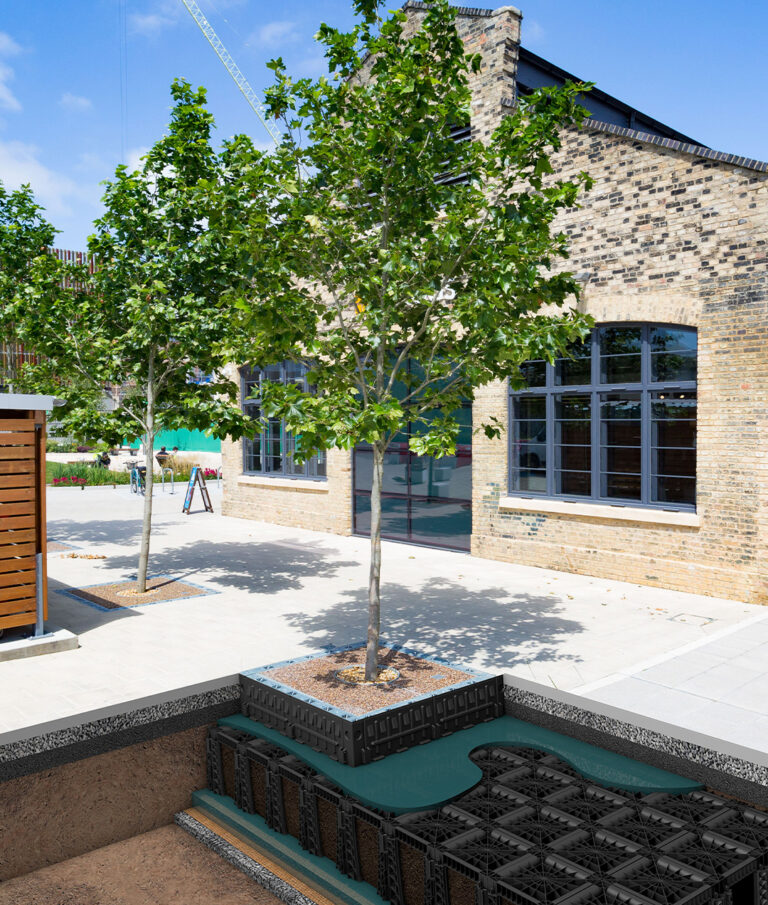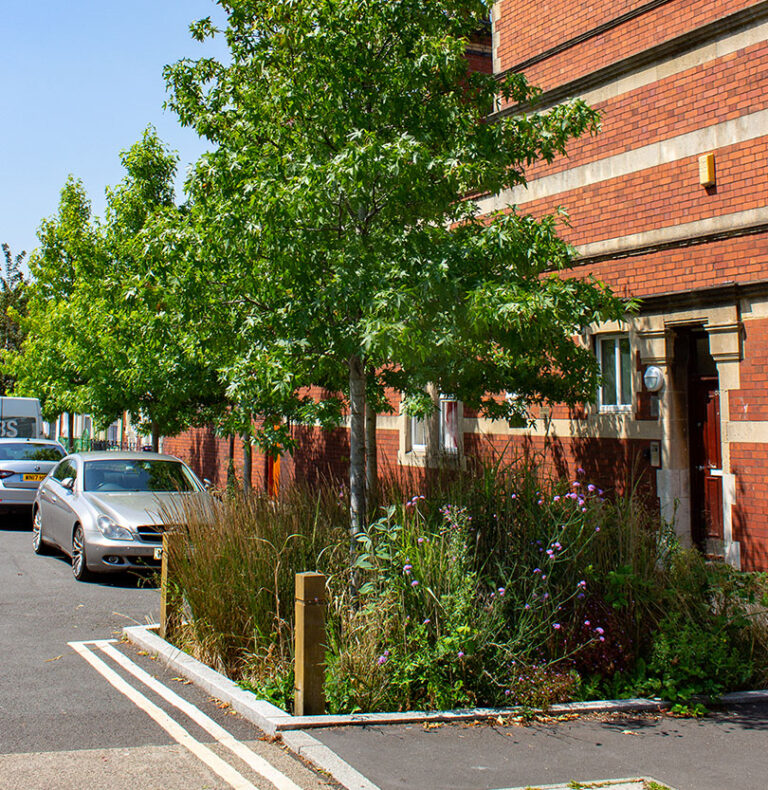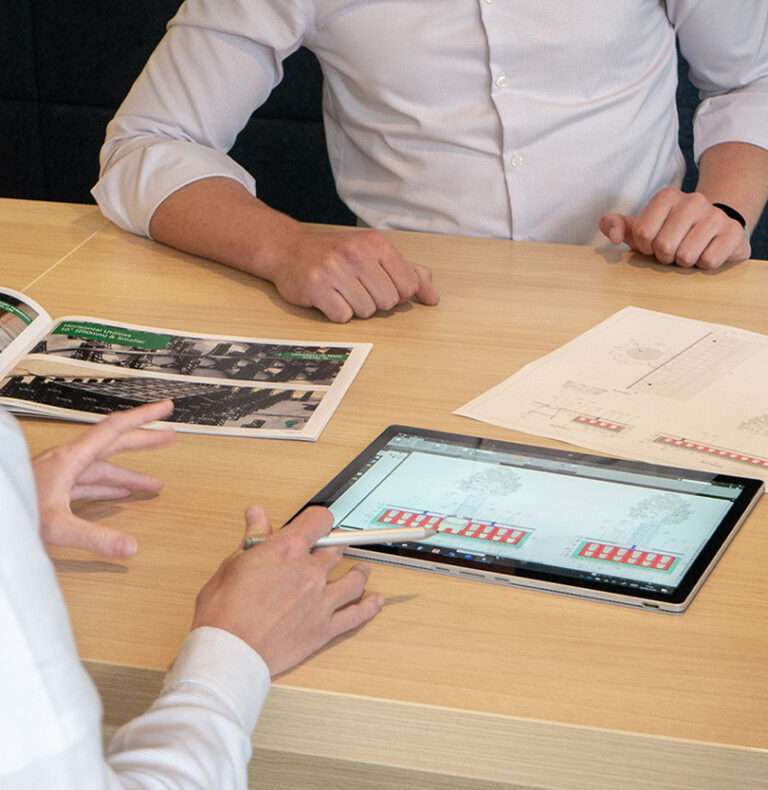Home » Blue
Blue infrastructure refers to a network of natural and semi-natural water features and spaces in urban environments, designed to manage water sustainably, provide ecosystem services, and enhance the quality of life for urban residents.
Urban stormwater management is the effort to reduce hard surface runoff from rainwater, tackling issues of flooding, erosion pollution of watercourses and infrastructure damage. It is a concept that aims to integrate water into urban planning and development, recognising that water can be an asset rather than just a potential problem in urban areas.
Blue infrastructure includes elements such as rivers, lakes, ponds, wetlands, green spaces, and sustainable drainage systems (SuDS).
Blue infrastructure refers to a network of natural and semi-natural water features and spaces in urban environments, designed to manage water sustainably, provide ecosystem services, and enhance the quality of life for urban residents.
Urban stormwater management is the effort to reduce hard surface runoff from rainwater, tackling issues of flooding, erosion pollution of watercourses and infrastructure damage. It is a concept that aims to integrate water into urban planning and development, recognising that water can be an asset rather than just a potential problem in urban areas.
Blue infrastructure includes elements such as rivers, lakes, ponds, wetlands, green spaces, and sustainable drainage systems (SuDS).

Sustainable Drainage Systems (SuDS), also known as Sustainable Urban Drainage Systems, Low Impact Development (LID) and Water Sensitive Urban Design (WSUD), are a set of practices and techniques used in urban planning and development to manage rainwater and surface water runoff in a more sustainable and environmentally friendly manner.
Providing opportunities for increased amenity value and place making through the utilisation of a nature-based solutions to reduce flood risk and attenuate surface water runoff.
SuDS aim to mimic natural drainage processes, reducing the risk of flooding, improving water quality, and enhancing the overall resilience of urban areas
Are a popular and effective SuDS intervention, especially in urban areas where space may be limited. They combine the benefits of stormwater management, water quality improvement, urban cooling, and ecological enhancement, making them a valuable addition to sustainable drainage strategies.
A shallow, planted depression designed to capture, infiltrate, and treat rainwater from impervious surfaces such as roofs, driveways, and roads, designed to be both functional and aesthetically pleasing.
Green roofs are planted surfaces on the tops of buildings that absorb rainwater, provide insulation, and support biodiversity.
SuDS may incorporate constructed ponds, wetlands, or swales that capture and store excess water during heavy rainfall, reducing the risk of flooding downstream and enhancing biodiversity.
These are vegetated areas or channels that slow down and filter rainwater runoff, removing pollutants and sediment.
These are large underground or surface-level storage systems that temporarily hold excess rainwater before slowly releasing it into drainage systems, reducing peak flow rates.
SuDS may incorporate rainwater harvesting systems that collect and reuse rainwater for purposes like irrigation, reducing the demand on potable water supplies.
SuDS promote the use of permeable materials for surfaces like roads, pavements, and driveways. These materials allow rainwater to infiltrate into the ground, reducing surface runoff.
Site assessment and suitability for SuDS implementation are essential to ensure that the chosen drainage strategies align with the site’s characteristics, environmental considerations, and flood risk management needs.
Water resource management goals should align with regulatory requirements and ensure climate change resilience.
Public awareness and understanding of SuDS are essential for their successful implementation. Communities may be involved in the design and maintenance of SuDS features.
SuDS are an integral part of blue infrastructure, as they contribute to the sustainable management of urban water resources, mitigate the effects of climate change on natural water cycles, and improve the overall liveability and resilience of urban areas.

Through consistent innovation and product development, GreenBlue Urban continue to design and manufacture SuDs compatible solutions for planting trees into the hard landscape.
Using our root directors, modular cell systems such as StrataCell and RootSpace, combined with our Arborflow system, a simple tree pit is transformed.
GreenBlue’s HydroPlanter raingarden product range, with full design and ancillary products, means that GreenBlue Urban are uniquely placed to advise on which solution is best for your project.
SuDSPod offers an innovative above-ground approach to on-plot attenuation, tackling issues such as peak flow rates from roofs, complex designs, and combined sewer overflow (CSO) overspills.

GreenBlue Urban is proud to announce the launch of SuDSPod, a groundbreaking and cost-effective solution that addresses many challenges associated with stormwater management. SuDSPod offers an innovative approach to on-plot attenuation, delivering unparalleled performance while tackling issues such as peak flow rates from roofs, complex designs, and combined sewer overflow (CSO) overspills.

Please wait while you are redirected to the right page...